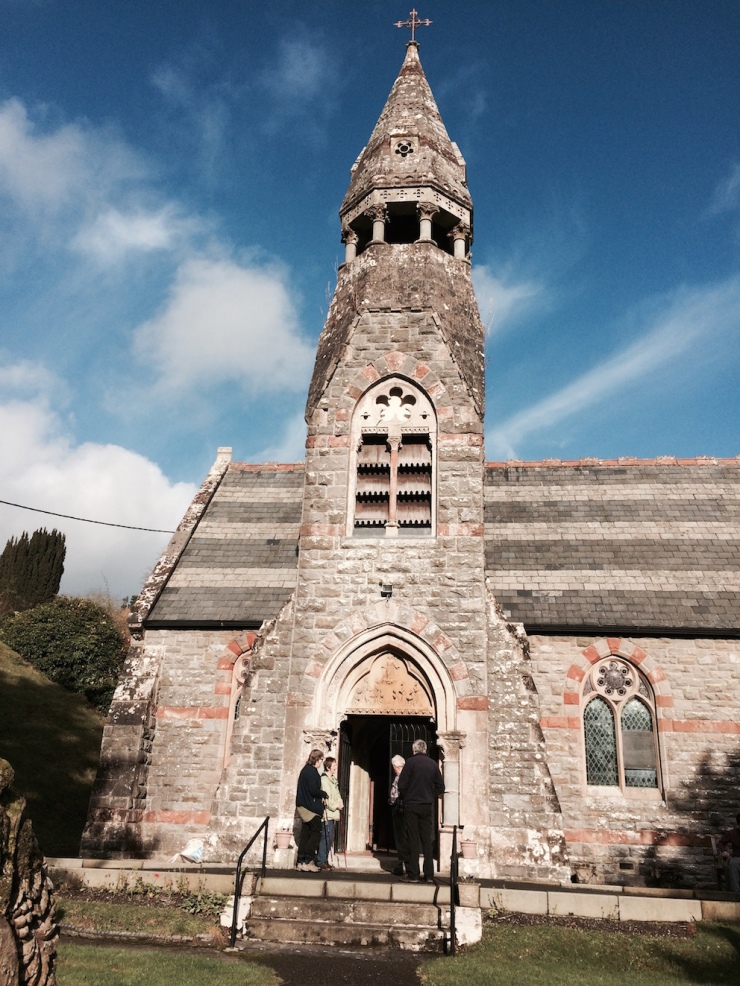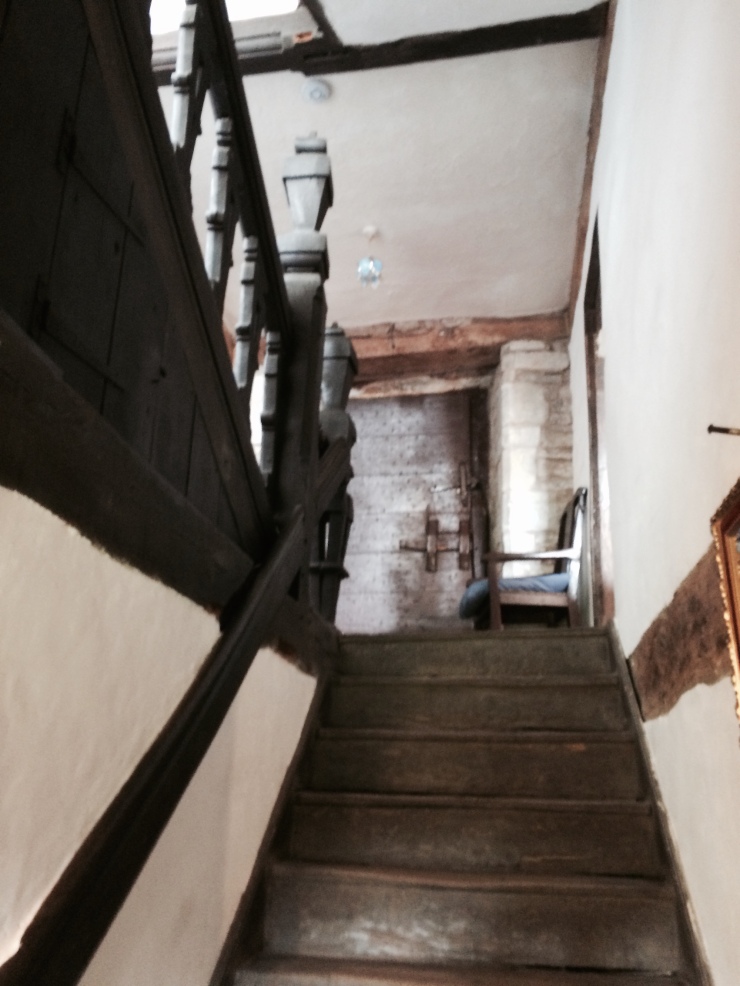From Abbey Cwmhir to Sarn.
Connecting remote hill communities by exploring the route used in mediaeval times by the Cistercian Monastery at Abbey Cwmhir & its grange in Dyffryn Ceri.
The monastery practised transhumance and the journey was to follow part so the route between two apparently disconnected places
The journey began with meeting members of the local community busy tidying their churchyard.
Who, it was discovered once worked the forestry plantations in what are known as the ‘Sarn Hills’.

The present church is C19th. The original monastic community was based nearby – and had the largest church nave of any in Wales. It was also the place to which the headless remains of Llywelyn ap Gruffudd, last independent king of Gwynedd were placed after his death in battle in 1282:
The Chronicle of Florence of Worcester;
As for the body of the Prince, his mangled trunk, it was interred in the Abbey of Cwm Hir, belonging to the Cistercian Order.
The Abbey lands at Cwmhir became the possession of Devannor (‘Ty Faenor’). The house still stands and is the residence of the Griffith family who have farmed there for many generations.
A lower room in the house was, until recently, used as a Methodist chapel.
The C16th staircase links the lower and middle sections of the house – the door at the top being at ground level.
It is difficult to assess the route that would have been used for transhumance – but probably it was slightly longer than that attempted on this journey which was reasonably direct. Ascending to the ridges above Cwmhir & then following them to the Ceri Ridgeway avoided all the intervening valleys. The route for this walk required the following & crossing of two major valleys and associated streams.
There were times when the reason for following the ridges became very obvious.
The hill sides locally continua many well worn trackways – indicative of the need to follow higher ground.
This was, and remains a very empty landscape – the ‘communities’ are scattered across hills and valleys. There are a few points which act as focal points – on this route, after Abbey Cwmhir, there was only one such small ‘gathered’ settlement having pub, church community shop and garage : Llanbadarn Fynydd.
On day two the walkers passed along and over the second ridge, descended into the valley of the river Teme and climbed to the Anchor pub.
Following lunch the route passed onto the Ceri Ridgeway then descended into Dyffryn Ceri, finishing at the C19th church ‘planted’ by Anglicans and thus creating the present village of Sarn. Remnants of the mediaeval font – probably from a chapel associated with the Cwmhir grange – and a memorial tablet to the foundation are found inside the church.























